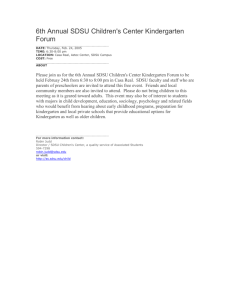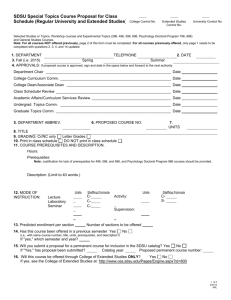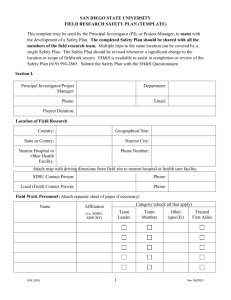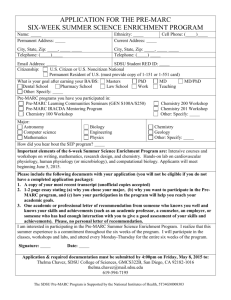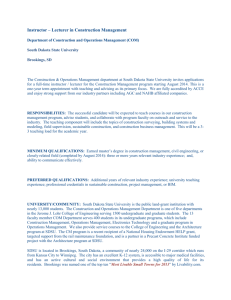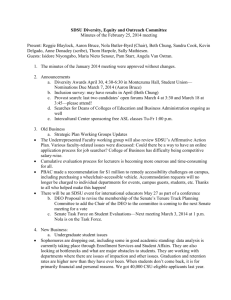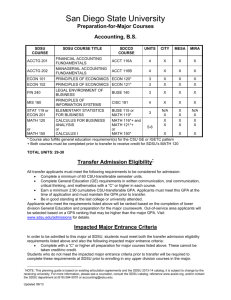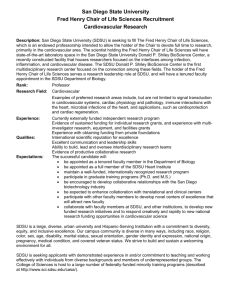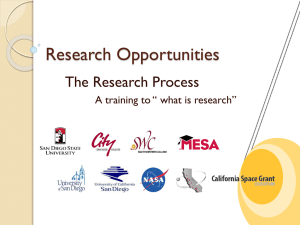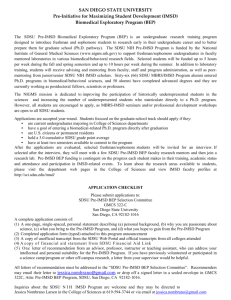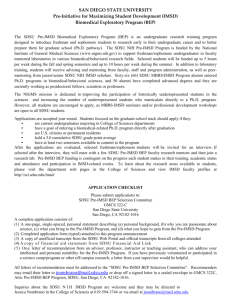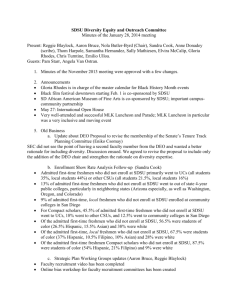Animal Exposure Risk Assessment Form - SDSU
advertisement
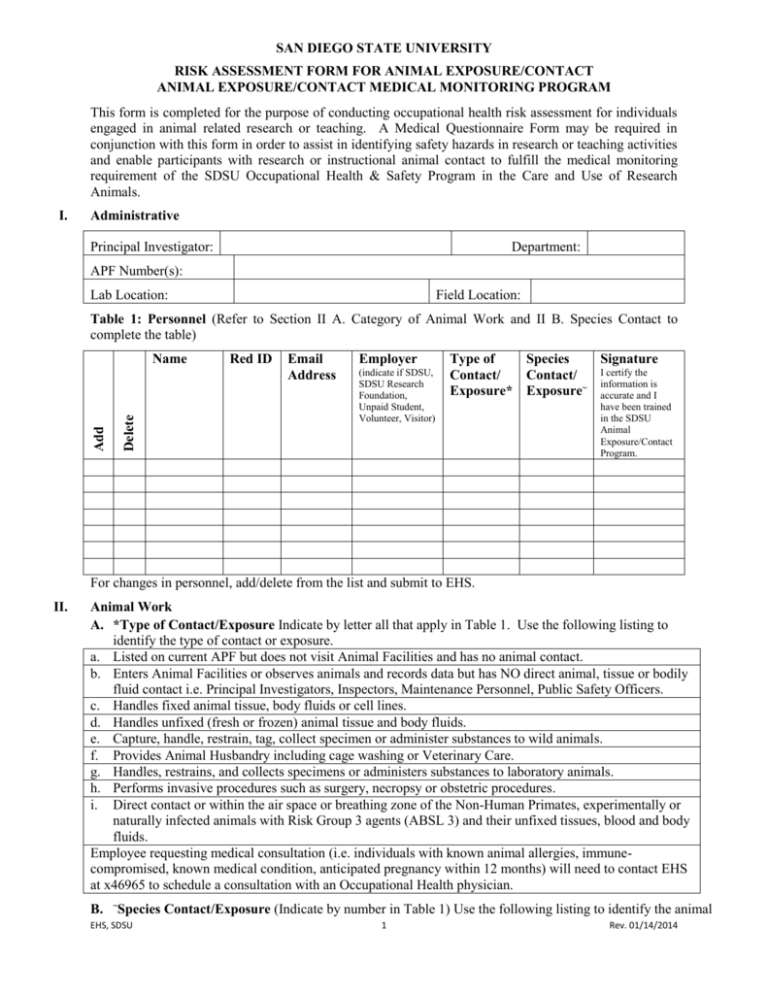
SAN DIEGO STATE UNIVERSITY RISK ASSESSMENT FORM FOR ANIMAL EXPOSURE/CONTACT ANIMAL EXPOSURE/CONTACT MEDICAL MONITORING PROGRAM This form is completed for the purpose of conducting occupational health risk assessment for individuals engaged in animal related research or teaching. A Medical Questionnaire Form may be required in conjunction with this form in order to assist in identifying safety hazards in research or teaching activities and enable participants with research or instructional animal contact to fulfill the medical monitoring requirement of the SDSU Occupational Health & Safety Program in the Care and Use of Research Animals. I. Administrative Principal Investigator: Department: APF Number(s): Lab Location: Field Location: Table 1: Personnel (Refer to Section II A. Category of Animal Work and II B. Species Contact to complete the table) Add Delete Name Red ID Email Address Employer (indicate if SDSU, SDSU Research Foundation, Unpaid Student, Volunteer, Visitor) Type of Species Signature I certify the Contact/ Contact/ information is ~ Exposure* Exposure accurate and I have been trained in the SDSU Animal Exposure/Contact Program. For changes in personnel, add/delete from the list and submit to EHS. II. Animal Work A. *Type of Contact/Exposure Indicate by letter all that apply in Table 1. Use the following listing to identify the type of contact or exposure. a. Listed on current APF but does not visit Animal Facilities and has no animal contact. b. Enters Animal Facilities or observes animals and records data but has NO direct animal, tissue or bodily fluid contact i.e. Principal Investigators, Inspectors, Maintenance Personnel, Public Safety Officers. c. Handles fixed animal tissue, body fluids or cell lines. d. Handles unfixed (fresh or frozen) animal tissue and body fluids. e. Capture, handle, restrain, tag, collect specimen or administer substances to wild animals. f. Provides Animal Husbandry including cage washing or Veterinary Care. g. Handles, restrains, and collects specimens or administers substances to laboratory animals. h. Performs invasive procedures such as surgery, necropsy or obstetric procedures. i. Direct contact or within the air space or breathing zone of the Non-Human Primates, experimentally or naturally infected animals with Risk Group 3 agents (ABSL 3) and their unfixed tissues, blood and body fluids. Employee requesting medical consultation (i.e. individuals with known animal allergies, immunecompromised, known medical condition, anticipated pregnancy within 12 months) will need to contact EHS at x46965 to schedule a consultation with an Occupational Health physician. B. ~ Species Contact/Exposure (Indicate by number in Table 1) Use the following listing to identify the animal EHS, SDSU 1 Rev. 01/14/2014 associated with the contact or exposure. Species 1. Amphibian 3. Birds 5. Dogs/Cats 7. Hooved Animal (i.e. sheep, goat, cattle) 9. Fish 11. Marine Mammal 13. Poisonous/Venomous Animal 15. Lab Animals Species 2. Lab Mice 4. Non-Human Primate 6. Rabbit 8. Lab Rat 10. Reptiles 12. Wild Mammals (i.e. bobcat) 14. Wild Rodents 16. Other: C. Additional Hazards Will you be working with any of the following hazards (Check all that Apply): Animals that harbor zoonotic agents If yes, potential zoonotic agent(s): Unfixed Animal Tissues If yes, list type of animal tissue: Microorganisms (i.e. viral vectors) If yes, list type of microorganism: Hazardous Chemicals (such as carcinogens, If yes, list chemicals: antineoplastic agents, teratogens, waste anesthetic gas) Radioactive Material If yes, list radioactive material: Work with animal bedding/waste If yes, list hazardous material shed or excreted: Work with poisonous/venomous animals If yes, list type of animal: Other If yes, list material: None III. Enrollment in Occupational Health Services Individuals who have contact or exposure to (including working within the “air space” or “breathing their air”) non-human primates (including unfixed tissue, blood and bodily fluids of these animals), or experimentally or naturally infected animals with Risk Group 3 agents (ABSL 3), or whose work involves animal husbandry or veterinary care with any species must enroll in the Animal Contact/Exposure Program by completing the Medical History Questionnaire. Anyone who had filled out the RAF but does not work with the types of animals/materials mentioned above are made aware of the MHQ and have the option of filling out the MHQ. In particular, individuals with known latex or animal allergies, are pregnant or plan to become pregnant, have chronic medical conditions or with existing medical conditions that create an animal contact health risk but do not work with the types of animals/materials mentioned above are encouraged to complete the MHQ. I certify the information is accurate and I have trained the individual on the information described in the SDSU Animal Exposure/Contact Program. Supervisor signature is mandatory for processing. Supervisor/PI Signature: Date: Submit this form to EH&S c/o Sheryl Major (smajor@mail.sdsu.edu) mail code 1243. EHS, SDSU 2 Rev. 01/14/2014
